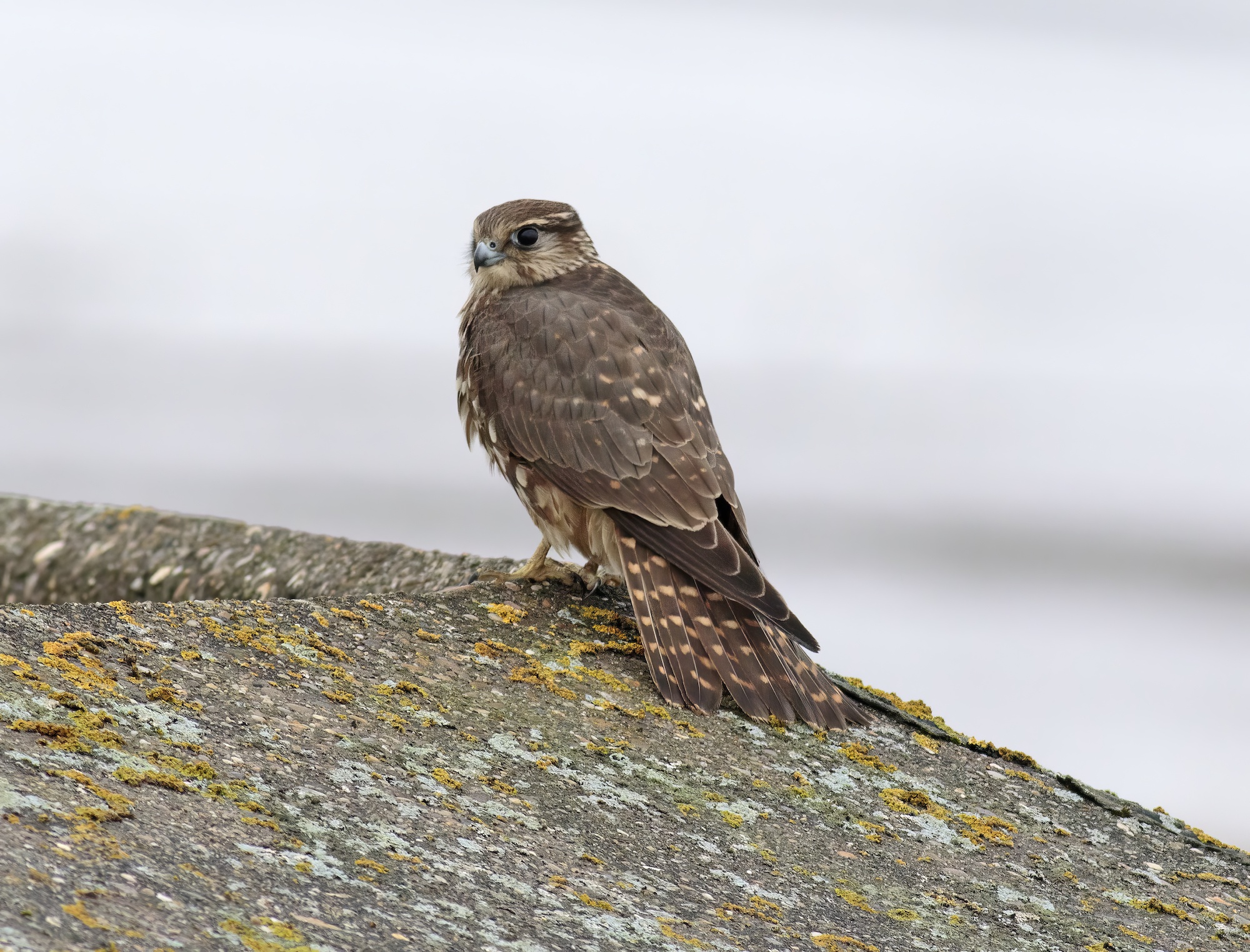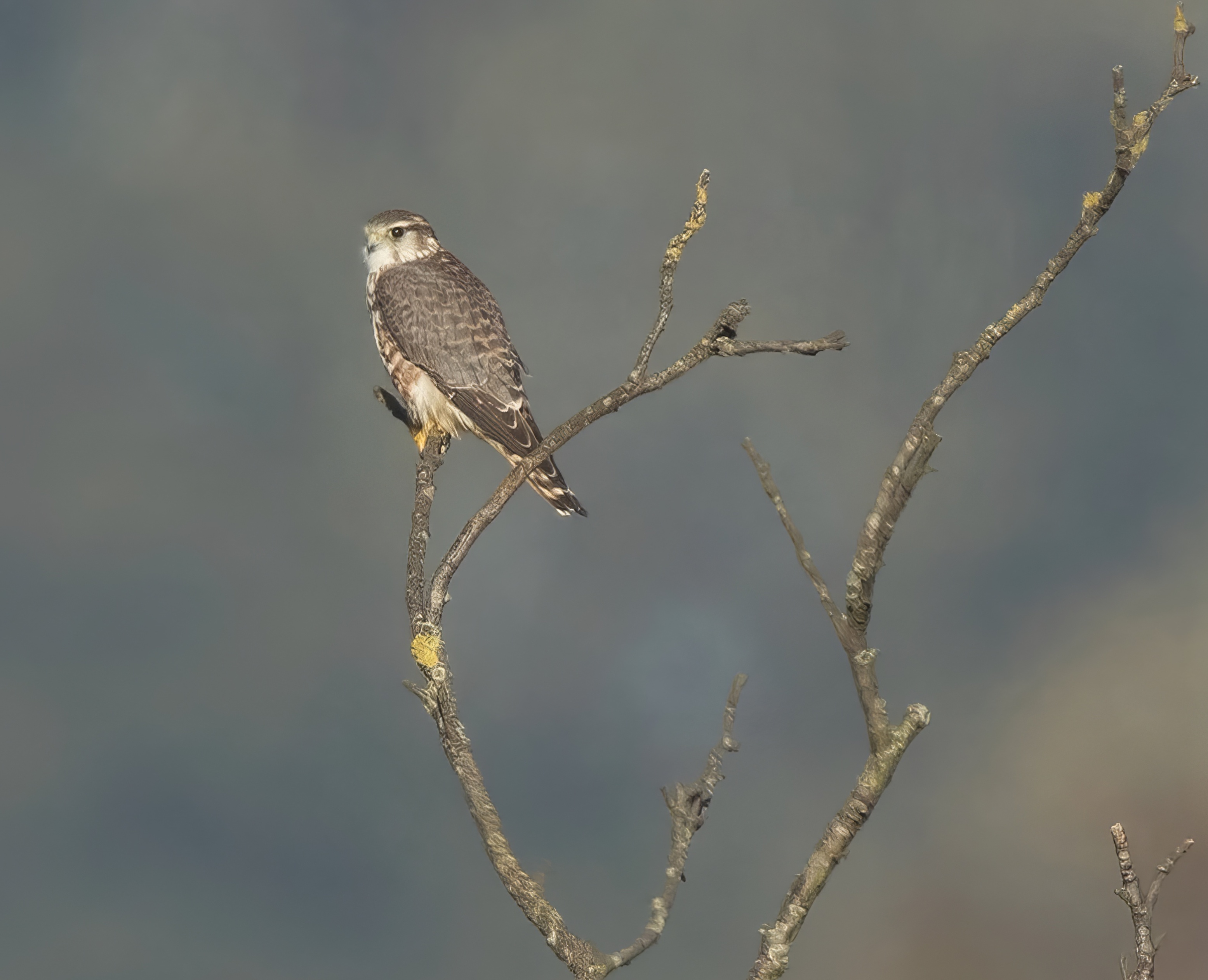Merlin Falco columbarius
British form aesalon is a scarce winter visitor and passage migrant, very scarce in summer. Bred sporadically in the 19th century. Icelandic form subaesalon have occured.


The bird-hunting Merlin still occurs along the coastal and Wash saltmarshes in autumn and winter but numbers on the Humber have declined markedly in the last 20 years and fewer birds now seem to winter inland, perhaps due to the fall in the numbers of their prey species on intensive arable farmland where winter stubble, a former favoured feeding area for finches, buntings, larks and pipits, has been replaced with winter cereals, oilseed rape and brown fields. Inland, extensive areas of open farmland with a general lack of tall hedgerows and clear views over wide vistas are preferred. Adult males remain a rarity but occasionally, presumably first-summer birds sometimes occur in June and July with the first fledged juveniles appearing from mid-August. Most wintering birds are solitary but up to four may gather in winter roosts. Winter hunting in association with Hen Harriers is frequently observed.
Ringed birds recovered in the county have originated from the Shetlands, Western Isles, Highlands and also Iceland - a nestling ringed at Vesturdalur, Nordur Thingeyjar in 1984 was found dead near Scunthorpe four years and eight months later, proof positive that birds of the race subaesalon do winter in the county, although they are unlikely to be identified in the field.
(Account as per new Birds of Lincolnshire (2021), included October 2022)
